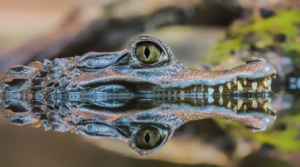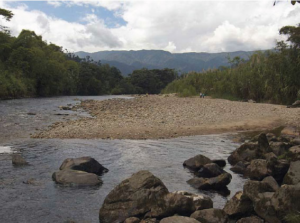San Francisco de Quito, built on ancient Inca Ruins in the 16th century, is located at an approximate height of 2850 meters above sea level. Declared on September 8, 1978, together with Krakow, the former capital of Poland, as the first Cultural Heritage of Humanity, Quito for having the best preserved and least altered historic center in all of Latin America maintains and preserves a history worthy of being known, which only by observing its ornate constructions mainly in its churches do we evidence the reason for this world declaration, churches that are an example of the art of the Baroque school of Quito, in which Spanish, Italian, Mudejar, Flemish and indigenous aesthetic influences merge. (UNESCO, 2021)
Let’s know a little more about the Churches of the Historic Center of Quito, considered the most extensive in America, within which we have:
CHURCH AND CONVENT OF SAN FRANCISCO DE QUITO
Located on Cuenca and Sucre streets, it is the first temple of the Franciscans, the church of San Francisco was founded by the Spanish in honor of the saint who bears his name. Saint Francis in Quito was born for art and evangelization. The building took almost 150 years to build (from 1534 to 1680). It was founded by the Franciscan missionary Jodoco Ricke, it was home to 160 monks. This has more than three hectares, it is the largest of its kind in America, it has a church, chapels, an art museum, patios, orchards, catacombs, a soccer field, and the old brewery, different works of art protect a large part of the Quiteña School’s works and that demonstrate the skills of its teachers and students.
The interior of the Church is arranged in three naves in the shape of a Latin cross. The central nave is elevated and the Mudejar-style coffered ceilings are said to be the first in the art of the time.
The altarpiece of the main altar is made of cedar and has numerous carvings, among them some that are indicated as the maximum expression of Quito’s sculpture, which protects the majestic sculpture of the Virgin of Legarda, this altarpiece is decorated in gold leaf, full of luminosity throughout the sculptural ensemble. The choir is made up of 81 cedar chairs with whimsical and highly worked carvings, and numerous paintings of saints that adorn its walls.
It is believed that it was the Royal Palace of Huayna Cápac (Inca Emperor), and also an important ceremonial temple for pre-Columbian society. Later it became the headquarters of the Catholic Franciscan Order.
In the past, the church of San Francisco was reserved for the wealthy people of Quito. The poor, the slaves, and the natives had to use the Hermitage of Cantuña. Located on the left, the Cantuña Chapel was reserved for the most humble, although the chapel is not simple. It is a beautiful sample of the Quito School, covered with angels, garlands, mirrors, and stars.
The church and the Convent of San Francisco keep an artistic collection of great representatives of the Quito School, mestizos such as Pampite, Caspicara, and Bernardo de Legarda, with their beautiful Winged Virgin of different sizes.
The Historic Center of Quito is also famous for the variety of craft beers in local businesses, but the history of the city’s brewery began in the religious complex during the 19th century. Monks tended the brewery until about 50 years ago. Today, the space is a museum, it has oak barrels to ferment and photos of the monks who operated the machines.
The monks did not brew beer for profit. The 3-5% alcoholic beverage was believed to be a safer alternative to water and that the monks drank or sometimes gave away to the poor of the city.
- CHURCH AND MONASTERY OF CARMEN ALTO
El Carmen de San José or Carmen Alto is located on the corner of Rocafuerte and García Moreno streets, its construction would begin approximately in the last decade of the 16th century. This space includes two old cloisters that correspond to the museum, a Church, and the new enclosure, where around 21 nuns of the Discalced Carmelite Order share a life of prayer, contemplation, and penance. This Order arrived in Quito on February 4, 1653, with a large entourage, then in May of the same year, they moved to the Old House of Mariana de Jesús, a house donated by the relatives of the First Ecuadorian Saint.
- CHURCH AND CONVENT OF LA MERCED
The temple of La Merced began its construction in the 18th century. This church became the first and main headquarters of the Mercedarian Order in the country and therefore bears the title of basilica. This construction that is located on the corner of Chile and Cuenca streets, is white, has 5 domes with a tower with a clock, it stores inside the main altarpiece of the church gilded with gold leaf, the Virgen de la Merced, made of stone, you can also see many works by the painter from Ibarra, Víctor Mideros. Beginning its construction in 1701, the basilica was consecrated in 1747.
The main altar is heavily worked Baroque, the work of Bernardo de Legarda. The image of the Virgin and Child was made in the 16th century, in a single block of stone and dressed in cloth. The background of the works of art in the church is the stucco interlacing that covers all the surfaces and especially the central nave, reflecting Mudejar and Baroque influences.
In the stands, the old carved and gilded wood organ from the 18th century is preserved, showing the two bodies of the organ and a Christ of Pampite.
In addition, inside the church, there are a series of oil paintings by Víctor Mideros, paintings related to the Virgin and political life also proclaimed as Patroness of the Armed Forces and the queen of Gran Colombia for enlightening and guiding the thoughts of Bolívar, Sucre and other patriots
- CHURCH OF THE COMPANY OF JESUS
Church of the Order of Jesuit intellectuals, of La Compañía de Jesús, a Religious Order founded by Saint Ignatius of Loyola, began its construction in 1605, by the Italian architect Marcos Guerra. Known as the church of gold, it is the most representative church of the Baroque style, whose main characteristic is the “horror vacuí”, that is to say, fear of emptiness. Decorated with around 53 kilos of gold leaf, it is a sign of the exuberance, purchasing power, and support that some religious orders had.
It is located on García Moreno and Sucre streets. Construction began in 1605 and took 160 years to complete. The sample is the Church of the Gesú in Rome, although with more decoration.
In its interior countless works of art of incalculable value are stored, within the main ones we can name the painting of the Last Judgment and the painting of Hell made by Alejandro Salas, being the originals made by Brother Hernando de la Cruz, there are also the prophets of Nicolás Javier de Goríbar, which we can see in the pillars of the church.
The most important thing about this church in addition to its exuberant decoration is that it is completely covered by gold leaves, which are thin sheets of gold glued to the wood.
On the main altar of the church, you can see the urn where the body of the first Ecuadorian saint, Mariana de Jesús, is found, who in exchange for the earthquakes that occurred offered her life.
- BASILICA OF THE NATIONAL VOW
Gabriel García Moreno was a defender of the Society of Jesus, he allowed the return of the expelled Jesuits in 1863. The influence of the Jesuits, their devotion to the Sacred Heart, and the Catholic passion of García Moreno allowed that in his government, in 1874, Ecuador was the first country in the world to be officially consecrated to the Sacred Heart of Jesus and the Immaculate Heart of Mary by the Archbishop of Quito, Monsignor José Ignacio Checa y Barba. The National Government determined that in honor of this consecration the Basilica of the National Vow be built in Quito.
The Basilica of the National Vow is the largest neo-Gothic church in America, it is located between Carchi and Venezuela streets, and García Moreno street, in the heart of the traditional neighborhood of San Juan in what was the sacred hill of Huanaucari (temple of the moon) in pre-Columbian times. It is a strategic view of the Historic Center and the North of the city. Its architect was the French Emilio Tarlier, who was inspired by the Notre Dame Cathedral, to make the plans between 1890 and 1896.
The Cuenca father Julio María Matovelle founded the Congregation of Oblate Missionaries in 1884. In 1895 he promoted the salt tax to continue with the construction of the temple. Together with his community of Missionary Oblates, architects Franz Schmidt and priest Pedro Brunning built the Chapel of the Immaculate Heart of Mary.
The basilica was built between 1892 and 1988, it was blessed by Pope John Paul II in 1985, it is not finished yet, but in 1988 it was officially consecrated and inaugurated. It was built in stone, brick, and concrete due to time and high costs. It has two towers as a bell tower, 110 meters high, and 5 more for the crosses, and rose windows, it also has gargoyles not only mythological as in the Chapel of the Heart of Mary but also endemic animals of the country, such as alligators, Galapagos tortoises, blue-footed boobies, armadillos, monkeys, pumas, among others. At a low level are marine and terrestrial species, and at the highest level is the condor because from that height they can fly.
- CHURCH OF EL SAGRARIO
Located on García Moreno Street, and Espejo, it is attached to the Primada Cathedral of Quito and is the tabernacle of it. In 1657, construction could only begin due to a lack of resources, and since it was located on the old El Tejar ravine, canalization and filling works had to be carried out first. Therefore, its design and construction took place at the end of the seventeenth century and the beginning of the eighteenth.
This church has three elements that characterize it and give importance to El Sagrario within Quito’s colonial art: the dome, the columns of its facade, decorated with subtle reliefs, and the screen, located in front of the main nave, being after Its facade, the first thing that the faithful devotees or the tourists who come to visit it see.
The screen is the Baroque door carved in 1747, with high polychrome reliefs and in gold leaf, an art that is attributed to one of the main representatives of the Quito School, Bernardo de Legarda, author of the Virgin of Quito.




